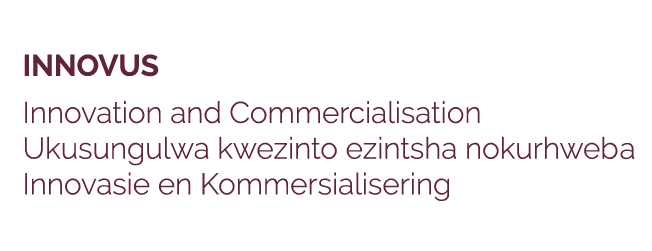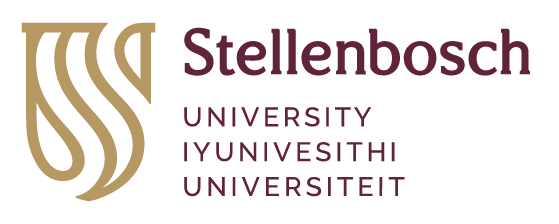Four SU innovation projects secure funding from TIA
The commercialisation journey of four research projects at Stellenbosch University (SU) has been boosted with seed funding secured from Technology Innovation Agency (TIA), an initiative of the Department of Science and Technology.
Facilitated and supported by Innovus, three of the innovations – the VICCI chatbot, UAVs CSP and the honeybee hive system for crops – have received seed funding grants worth R640 000, R650 000 and R248 887, respectively. The fourth innovation – the IRI Needle – has received R590 280 from the TIA Reserve Fund.
Infrared and impedance guided vascular needle (IRI Needle)
The IRI Needle is a small disposable infrared vascular needle that helps medical and emergency care personnel to penetrate blood vessels and locate the exact position of entry to veins and arteries during lumbar punctures and epidurals.
The IRI Needle is licenced to Innovation4Life under an Innovus Instant Access™ License. With its unique electronic design, the IRI Needle is guided in a directional movement by near-infrared technology, enabling physicians to gain successful access to vascular and spinal spaces.
“The needle points towards cerebrospinal fluid in the spinal canal, or away from any arteries, or towards selected veins and arteries,” explains Prof Pieter Fourie, Researcher at the Biomedical Engineering Research Group at the Department of Mechanical and Mechatronic Engineering.
With its impedance technology, the needle can also indicate when the tip makes contact with cerebrospinal fluid or blood. “The IRI Needle can increase the success rates in uncontaminated cerebrospinal fluid and blood extractions,” Prof Fourie adds.
Other benefits include ease of use, reducing time and cost spent on training staff and redoing unsuccessful procedures, and limiting the emotional and physical trauma of patients.
Research team
-
Prof Pieter Fourie: Researcher Biomedical Engineering Research Group, Department of Mechanical and Mechatronic Engineering, SU
-
Tys van der Merwe: Master’s student, Department of Mechanical and Mechatronic Engineering, SU
-
Jandré Dippenaar: Final-year Mechanical Engineering student, Department of Mechanical and Mechatronic Engineering, SU
-
Christoffel Johannes and Adriaan Fourie: Technical Support, Innovation4Life
VICCI Chabot
Powered by artificial intelligence (AI), VICCI is an autonomous e-coach built on a chatbot platform to facilitate executive and personal life coaching.
Established by Dr Nicky Terblanche, the VICCI chatbot is built on artificial intelligence (AI) and acts as an autonomous e-coach. The chatbot aims to reproduce human conversations. It can simulate a human coach, which makes it a scalable and cost-effective solution as a learning and development coaching intervention.
As the world transitions into the Fourth Industrial Revolution, the impact of AI can be seen in all spheres of business and daily life. Technological shifts will inevitably continue to give rise to issues and people will need help to navigate new life directions, improve work performance and communications and mitigate conflicts.
People are complex and dynamic – each person has a different type of motivation and the need for coaching will continue to grow. The VICCI chatbot can help people to clarify thinking, to feel, be heard, and to help guide goals and objectives and develop self-awareness. For businesses looking to scale coaching intervention, the VICCI chatbot can coach a large pool of the workforce at a fraction of human-to-human coaching time, improving efficiency and, ultimately, profitability.
Research team
-
Dr Nicky Terblanche: Senior Lecturer and Researcher in Management Coaching and Information, Faculty of Economic and Management Sciences, University of Stellenbosch Business School
UAV services for CSP
Using unmanned aerial vehicles (UAVs) to calibrate and measure the optical quality of heliostats in concentrating solar power (CSP) plants yields increased productivity and efficiency.
Heliostat devices mechanically actuate optical reflectors that track the sun to reflect the irradiation onto a solar receiver. The ability of heliostats to reflect solar radiation precisely onto central solar receivers significantly impacts the efficiency of the solar field.
Existing solutions for heliostat calibration are time-consuming, while optical quality measurement requires interventions in which the heliostats are removed from the solar field manually. The application of UAVs to calibrate the heliostats speeds up the calibration process while yielding better results. It also enables measurement of the optical quality of the heliostats while in the field, and can also be used to clean the heliostats.
Research team
-
Dr Willie Smit: Solar Thermal Energy Research Group (STERG), Department of Mechanical and Mechatronic Engineering, SU
-
Dr Matti Lubkoll: STERG, Department of Mechanical and Mechatronic Engineering, SU
-
Dr Paul Gauché: Sandia National Laboratories, USA
Honeybee hive-system for crops
Designed to optimise pollination services, this system uses honeybees to pollinate crops.
The honeybee hive system is a design-driven invention conceptualised by two experimentally inclined researchers, Dr Corneile Minnaar and Dr Marinus de Jager, experts in pollination ecology and honeybee behaviour.
It is a novel hive system, the first redesign of the Langstroth beehive designed as a pollinator that uses honeybees as primary pollinators of agricultural crops. This hive systems was developed with the intent to serve the growing demand for crop pollination services by South African farmers who harvest fruit, berries, vegetables and seeds, the system contributes to a more sustainable future.
The concept came about when, during his PhD research, Dr Minnaar discovered that honeybees are inefficient at pollinating crops. Dr Minnaar and Dr De Jager then combined their expertise and jointly explored the insights into honeybee foraging behaviour and the crop-pollination service industry to create this beehive system.
The first trial experiments began last year and the researchers are currently conducting field trials on the latest prototype at SU, where Dr Minnaar is doing a postdoctoral fellowship.
Research team
-
Dr Corneile Minnaar: Department of Botany and Zoology, SU
-
Dr Marinus de Jager: Department of Conservation Ecology and Entomology, SU
Innovus TIA Seed Fund track record
Since 2014, SU has received TIA Seed Fund investments for 48 projects valuing more than R18 500 000, supported the creation of 33 new partnerships, secured 10 licence deals and established eight start-up companies. Innovus has successfully secured over R15 000 000 in second-round funding for seed-funded projects from other funding sources.
From concept to creation
The Innovus Technology Transfer division protects and commercialises the research results of SU researchers. Innovus has been highly successful in attracting TIA Seed Fund investments for research projects. The TIA Seed Fund allows for streamlined local decision-making and does not claim royalties or equity in projects that achieve commercial success. However, TIA does retain first right of approval to fund the further development of the outputs of the programme.
SU researchers working on a project or a concept that has commercialisation potential can benefit from the support services that Innovus provides. The support services include the management of core commercialisation activities: evaluating the commercial potential of the research, patent filing, technology or research licencing and facilitating the establishment of a spinout company.
Innovus Technology Transfer Managers Nolene Singh and Joubert de Wet invite University researchers to make contact at
info@innovus.co.za or to sign up for the Innovus newsletter to stay in touch and in tune with news and events.
Please stay in touch for further news on the next call for TIA Seed Fund applications call.
For further information on the TIA Seed Fund application process, please click
here.
Our doors are open to help our researchers progress and move through all the commercialisation stages – from concept creation to expansion – creating new opportunities and entrepreneurial experiences.

